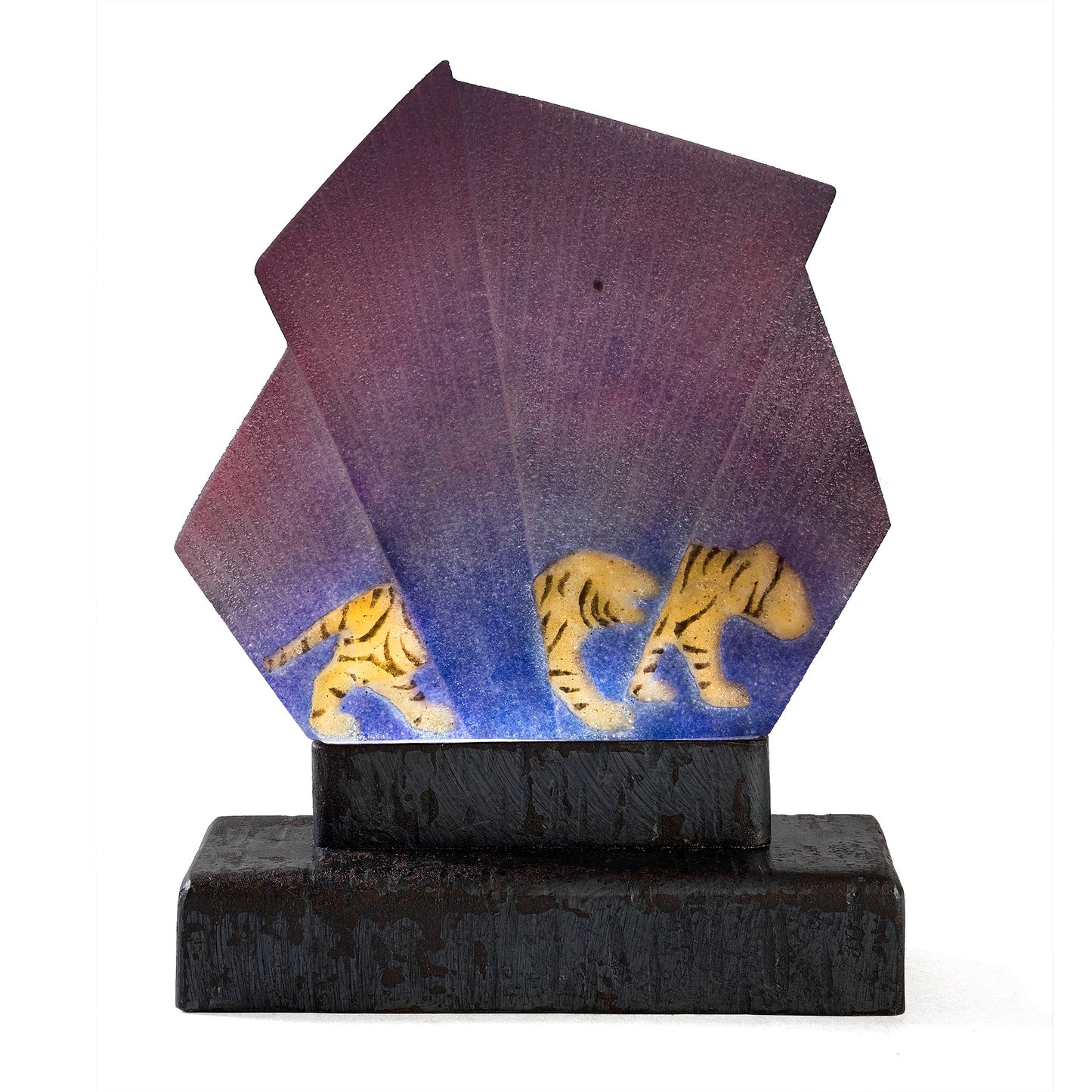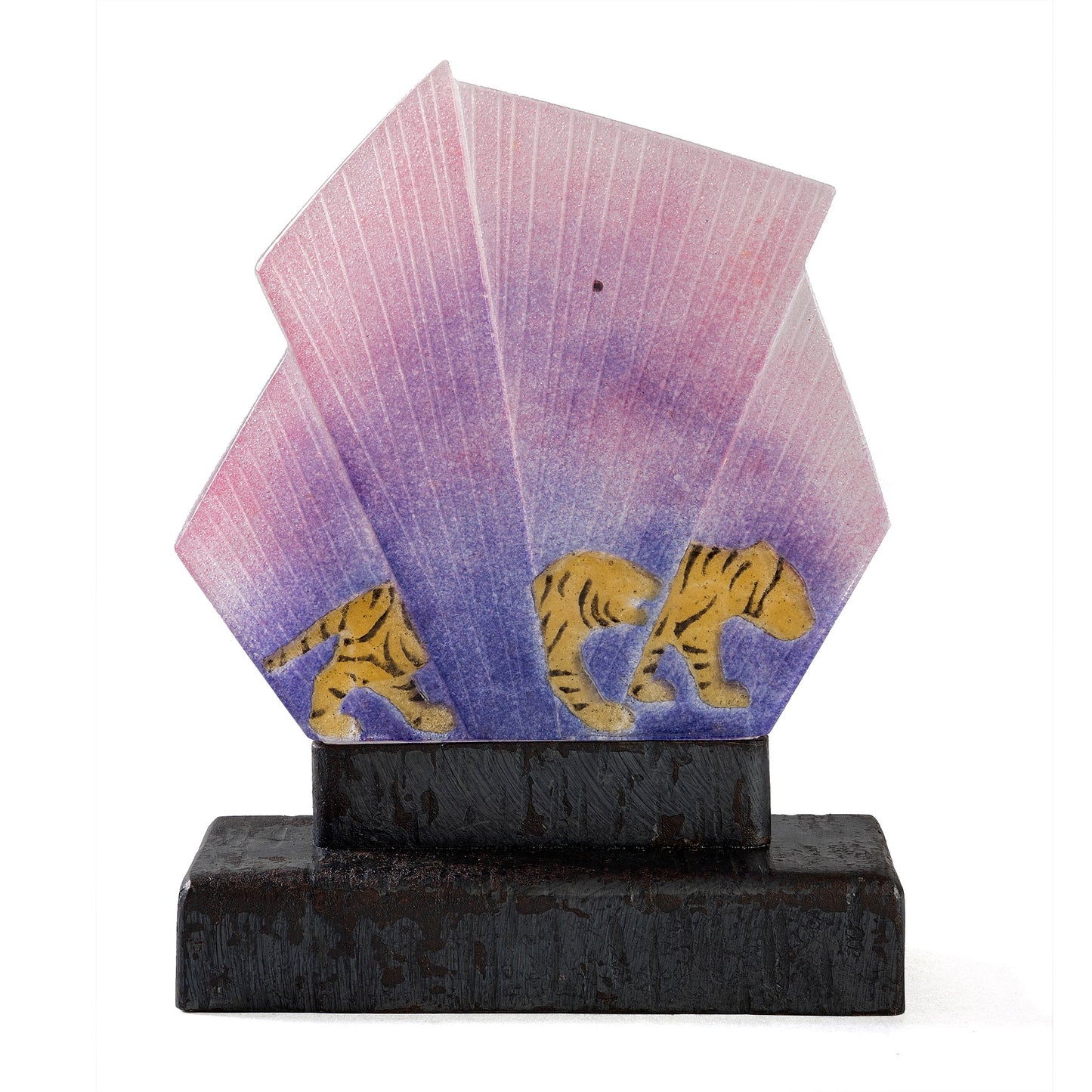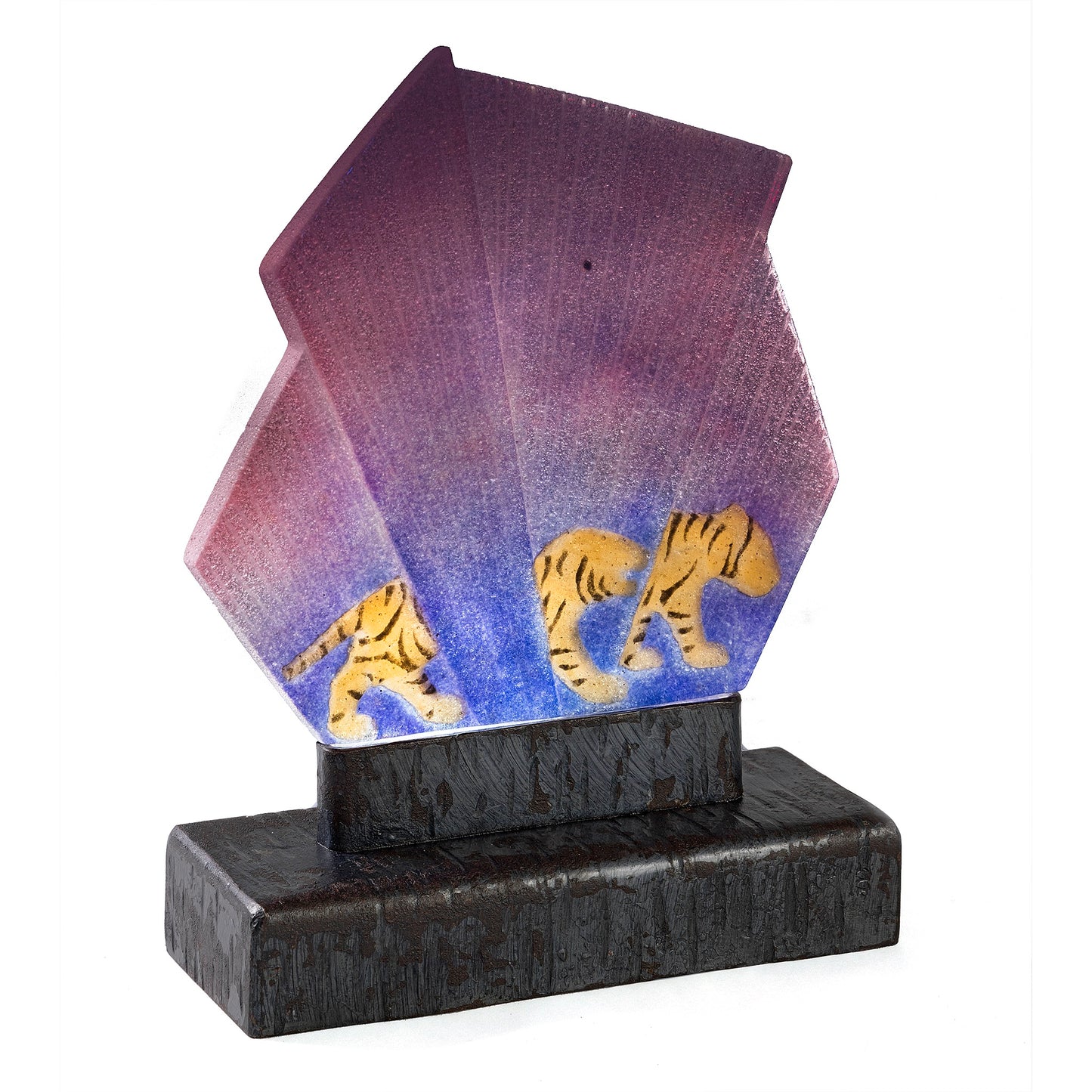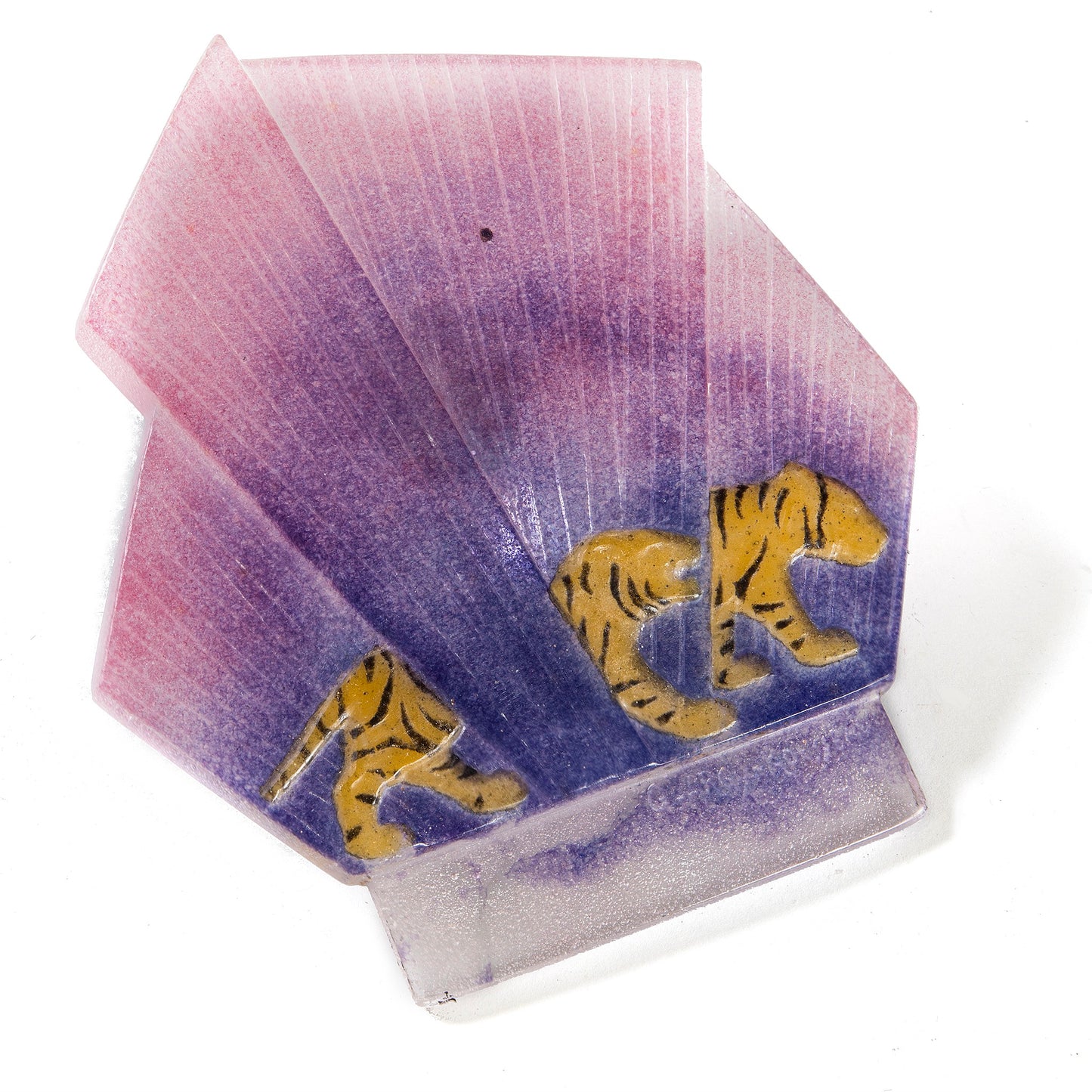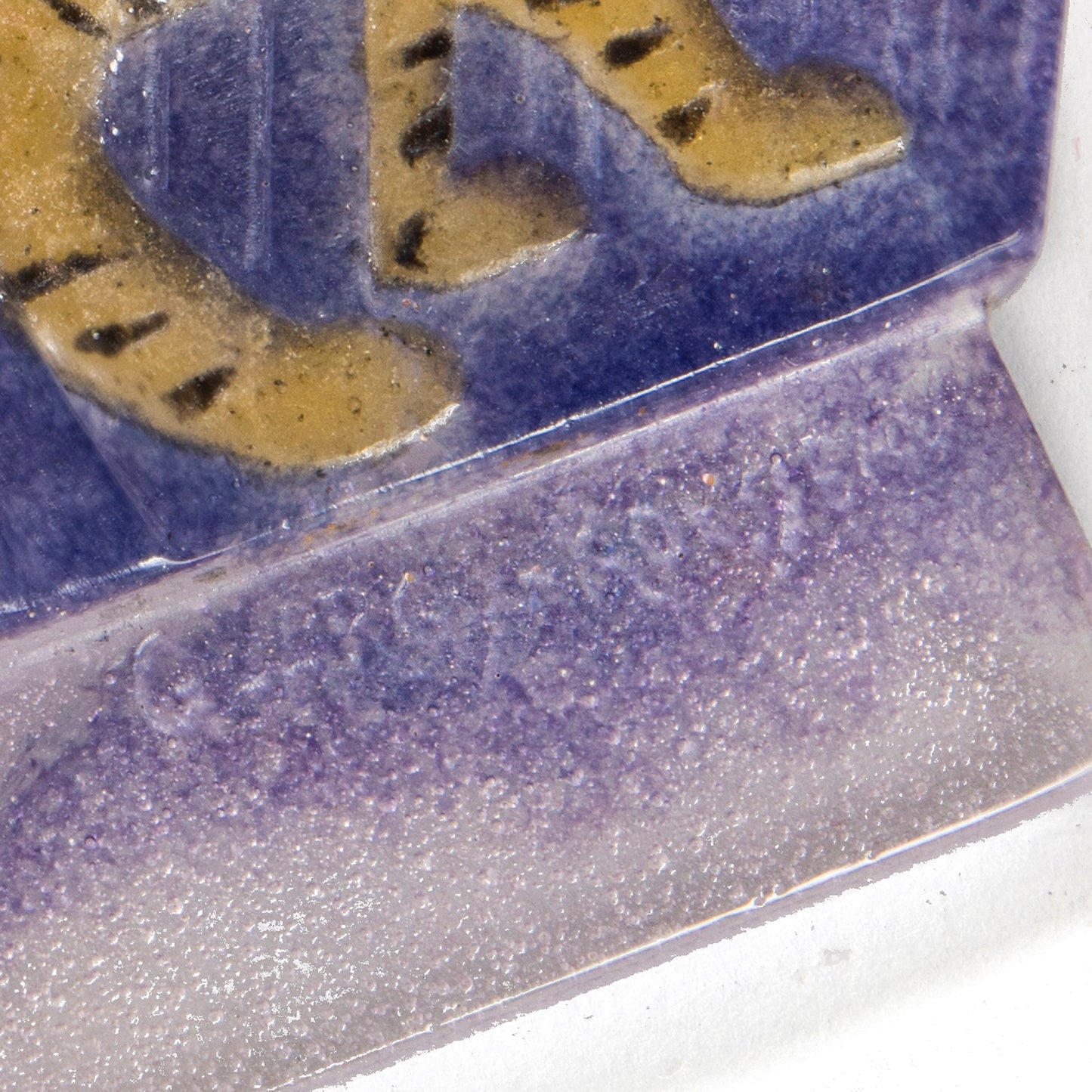Gabriel Argy-Rousseau Pâte de Verre "Tigres dans L'Herbe" Night Light
Item #: YEL-21238
Artist: Gabriel Argy-Rousseau
Country: France
Circa: 1928
Dimensions: 8.5" height, 6" diameter.
Materials: Pâte de verre, translucent glass, Wrought Iron
Signed: G. Argy-Rousseau and France
Literature: G. Argy-Rousseau Glassware as Art, with a Catalogue Raisonné of the Pâtes de Verre, by Janine Bloch-Dermant, Thames and Hudson, 1990, page 217, plate 28.11.
Item #: YEL-21238
Artist: Gabriel Argy-Rousseau
Country: France
Circa: 1928
Dimensions: 8.5" height, 6" diameter.
Materials: Pâte de verre, translucent glass, Wrought Iron
Signed: G. Argy-Rousseau and France
Literature: G. Argy-Rousseau Glassware as Art, with a Catalogue Raisonné of the Pâtes de Verre, by Janine Bloch-Dermant, Thames and Hudson, 1990, page 217, plate 28.11.












